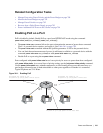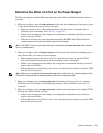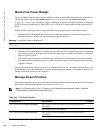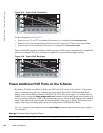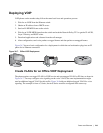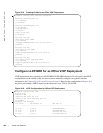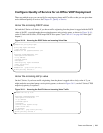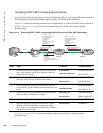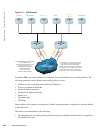
Power over Ethernet | 795
Deploying VOIP
VoIP phones on the market today follow the same basic boot and operations process:
1. Wait for an LLDP from the Ethernet switch.
2. Obtain an IP address from a DHCP server.
3. Send an LLDP-MED frame to the switch.
4. Wait for an LLDP-MED frame from the switch and read the Network Policy TLV to get the VLAN ID,
Layer 2 Priority, and DSCP value.
5. Download applications and software from the call manager.
6. After configuration, send voice packets as tagged frames and data packets as untagged frames.
Figure 36-7 shows a basic configuration for a deployment in which the end workstation plugs into an IP
phone for its Ethernet connection.
Figure 36-7. Office VOIP Deployment
Create VLANs for an Office VOIP Deployment
The phone requires one tagged VLAN for VOIP service and one untagged VLAN for PC data, as shown in
Figure 36-7. You may configure voice signaling on the voice VLAN, but some implementations might
need an additional tagged VLAN for this traffic; Figure 36-8 adds an additional tagged VLAN for voice
signaling. The example is from a C-Series, but an S-Series would be configured in the same way.



